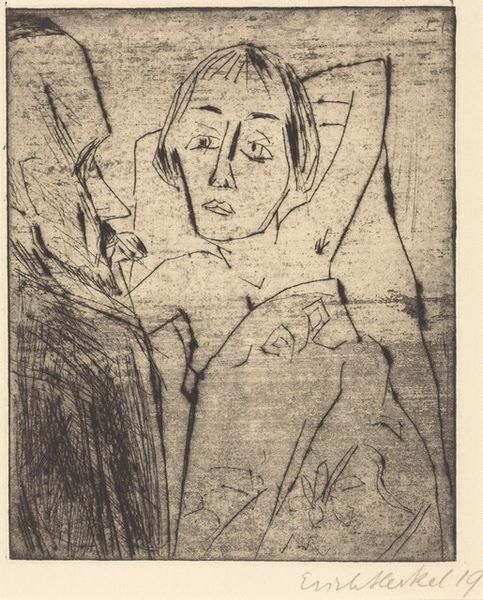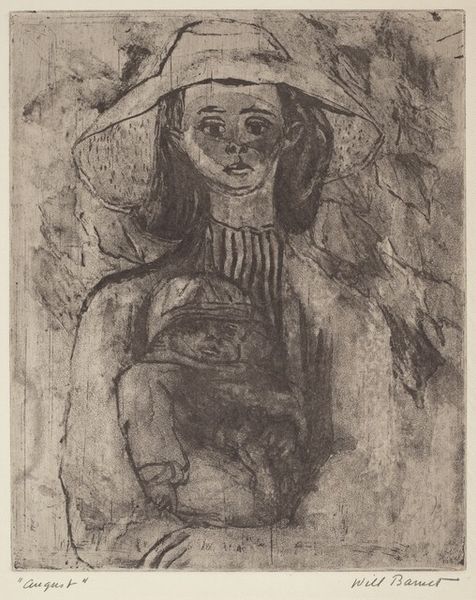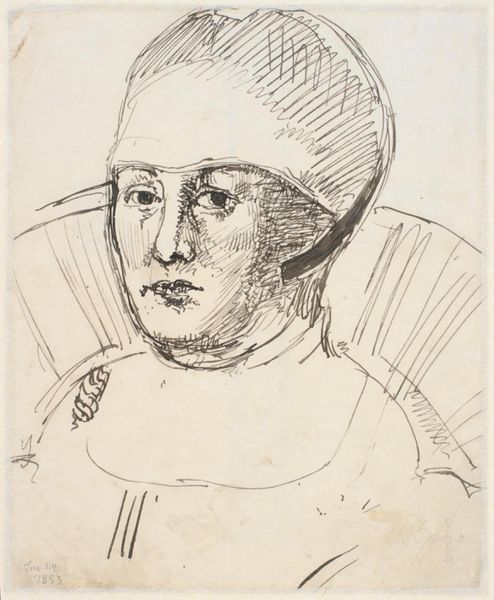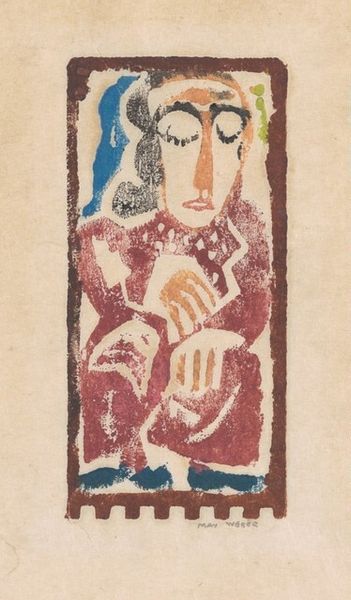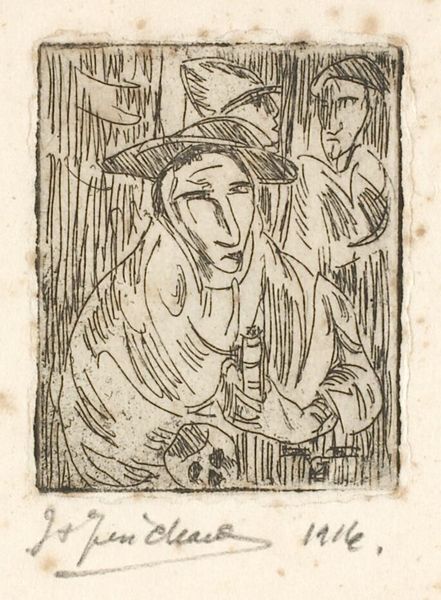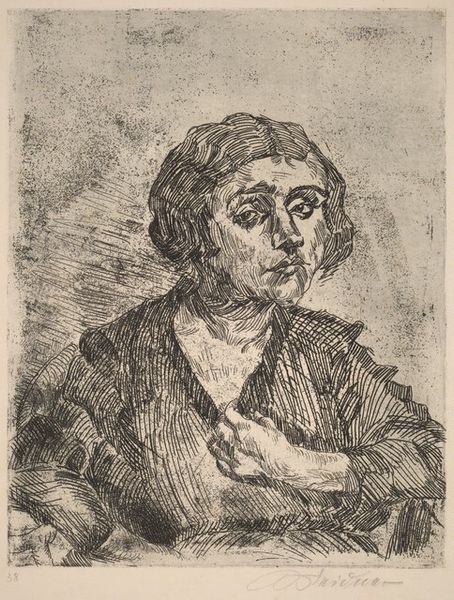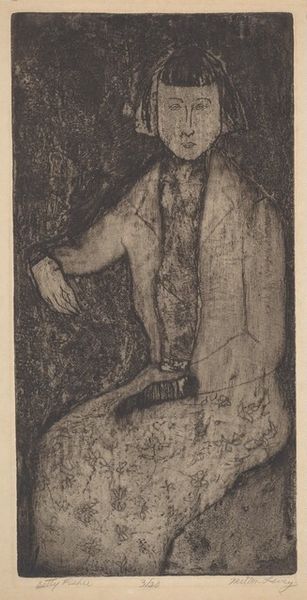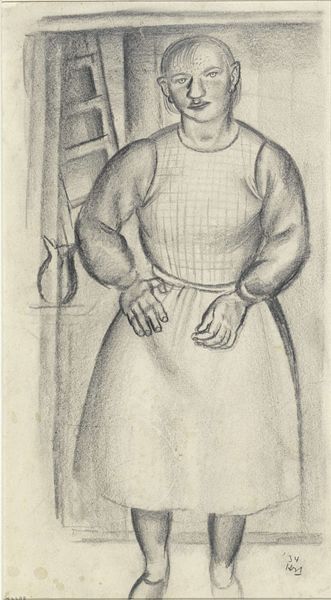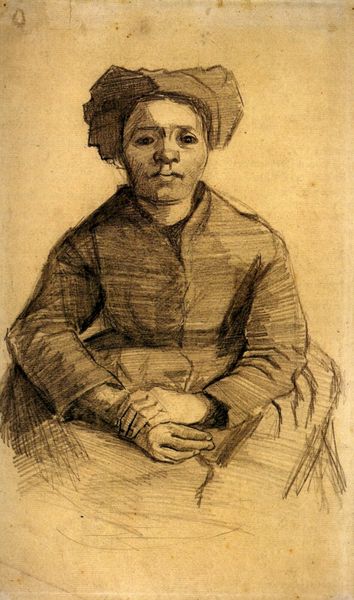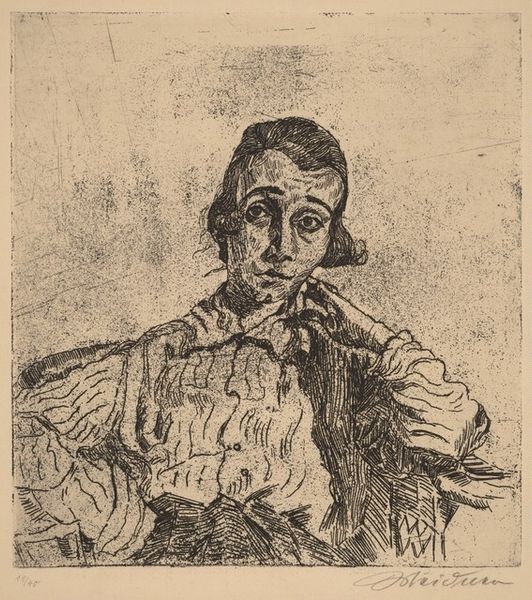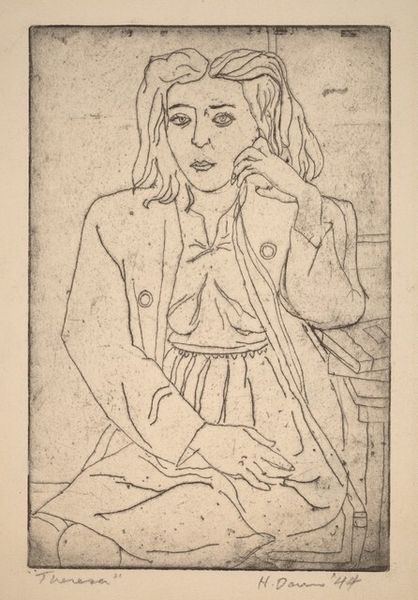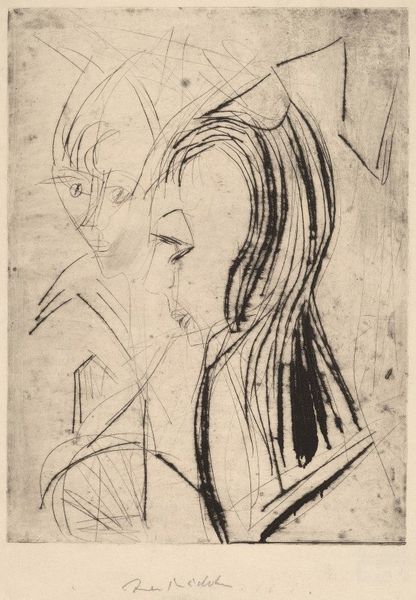
print, etching
#
portrait
# print
#
etching
#
figuration
#
expressionism
Dimensions: plate: 32.7 × 22.7 cm (12 7/8 × 8 15/16 in.) sheet: 52.6 × 43.7 cm (20 11/16 × 17 3/16 in.)
Copyright: National Gallery of Art: CC0 1.0
Editor: Bernhard Kretzschmar's "Meine Frau," or "My Wife," an etching from 1920. The woman’s gaze is so haunting; there’s such a sense of quiet desperation. What’s your take on this work? Curator: This print emerged from a period of immense social upheaval in Germany after World War I. Expressionism, in its focus on subjective experience and distorted forms, became a powerful tool for artists to grapple with the psychological fallout of the war and the societal ills of the Weimar Republic. The figure, with her downcast eyes and clasped hands, speaks to this sense of vulnerability. Does her depiction challenge conventional representations of women in art history? Editor: Absolutely. There’s nothing idealized about her. She looks burdened. Curator: Consider the socio-political context. The Weimar Republic was a time of both great social progress and intense political instability, rife with poverty. How might this artwork reflect the economic struggles of women in post-war Germany? What's the impact of presenting the artist's wife this way to the public? Editor: It could be a commentary on the toll of those hardships. And showing this so publicly almost politicizes something that should remain private...or intimate. Curator: Precisely. Kretzschmar's "Meine Frau" offers a window into the complexities of identity, representation, and the anxieties of a society in transition. Seeing this print invites us to contemplate the individual struggles mirrored in a period of vast historical transformation. Editor: I never thought about it in this perspective! Understanding the social context gives the work such deeper meaning. Thank you! Curator: It’s through such layered analysis that art truly speaks.
Comments
No comments
Be the first to comment and join the conversation on the ultimate creative platform.
